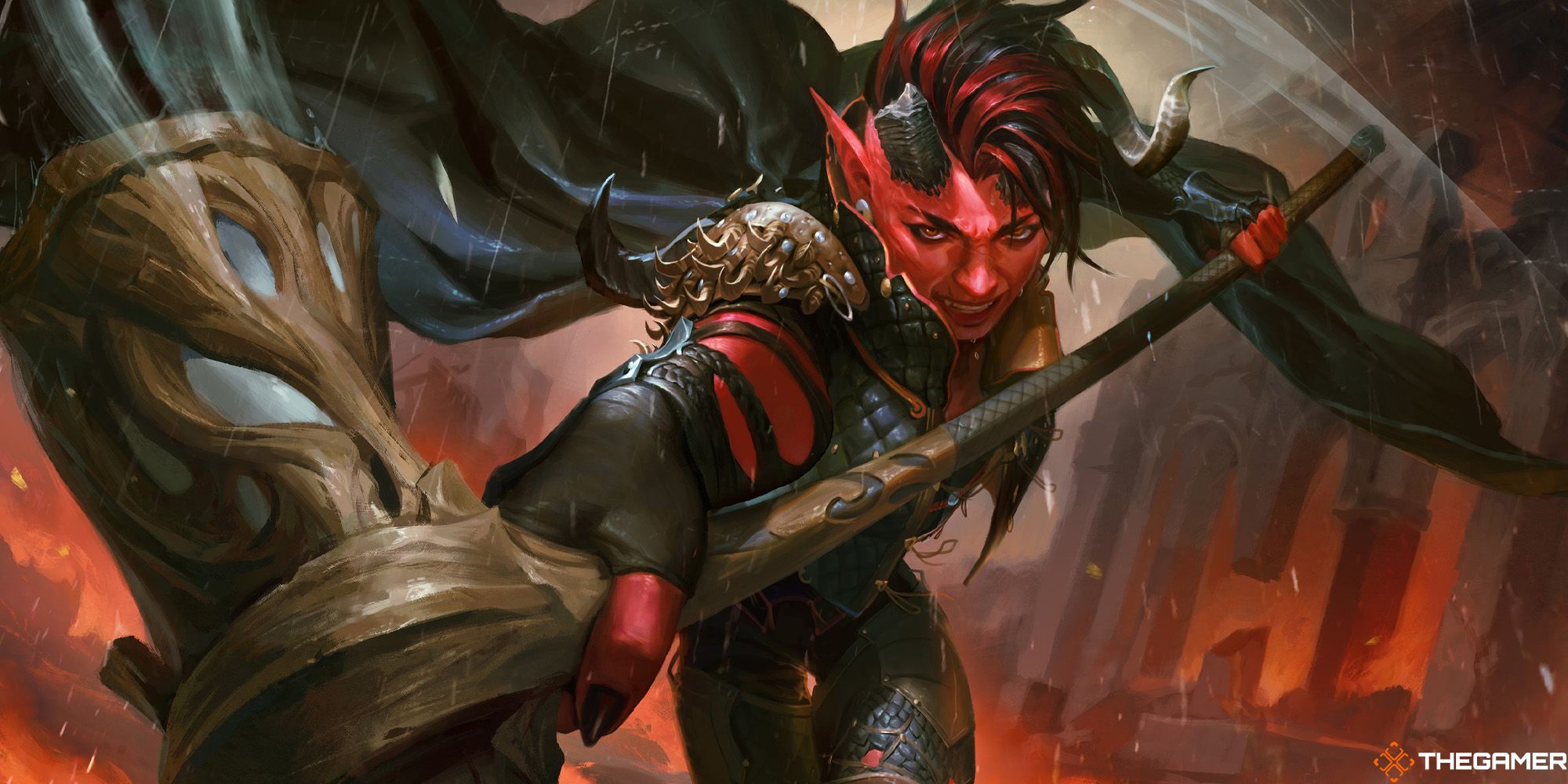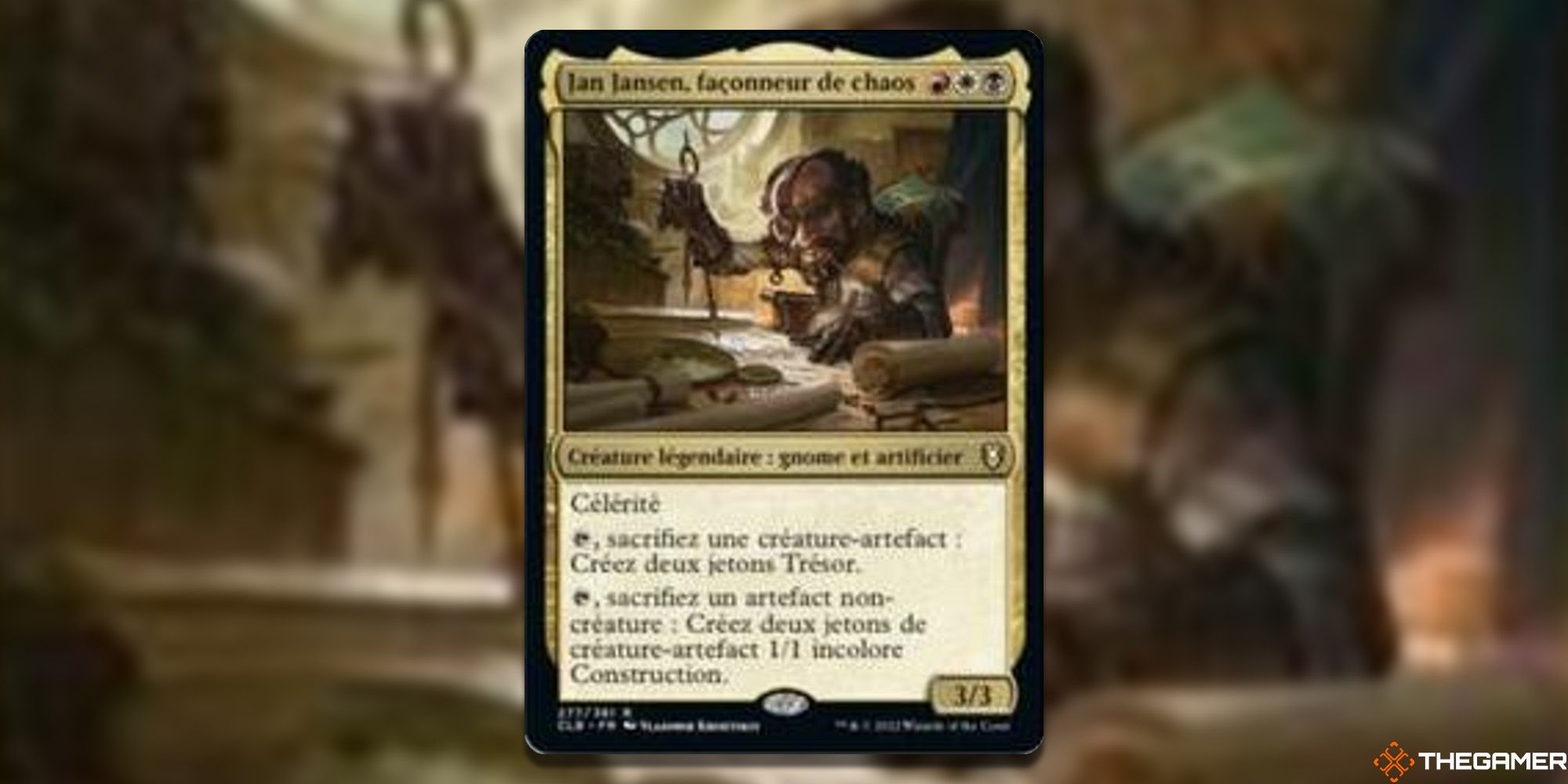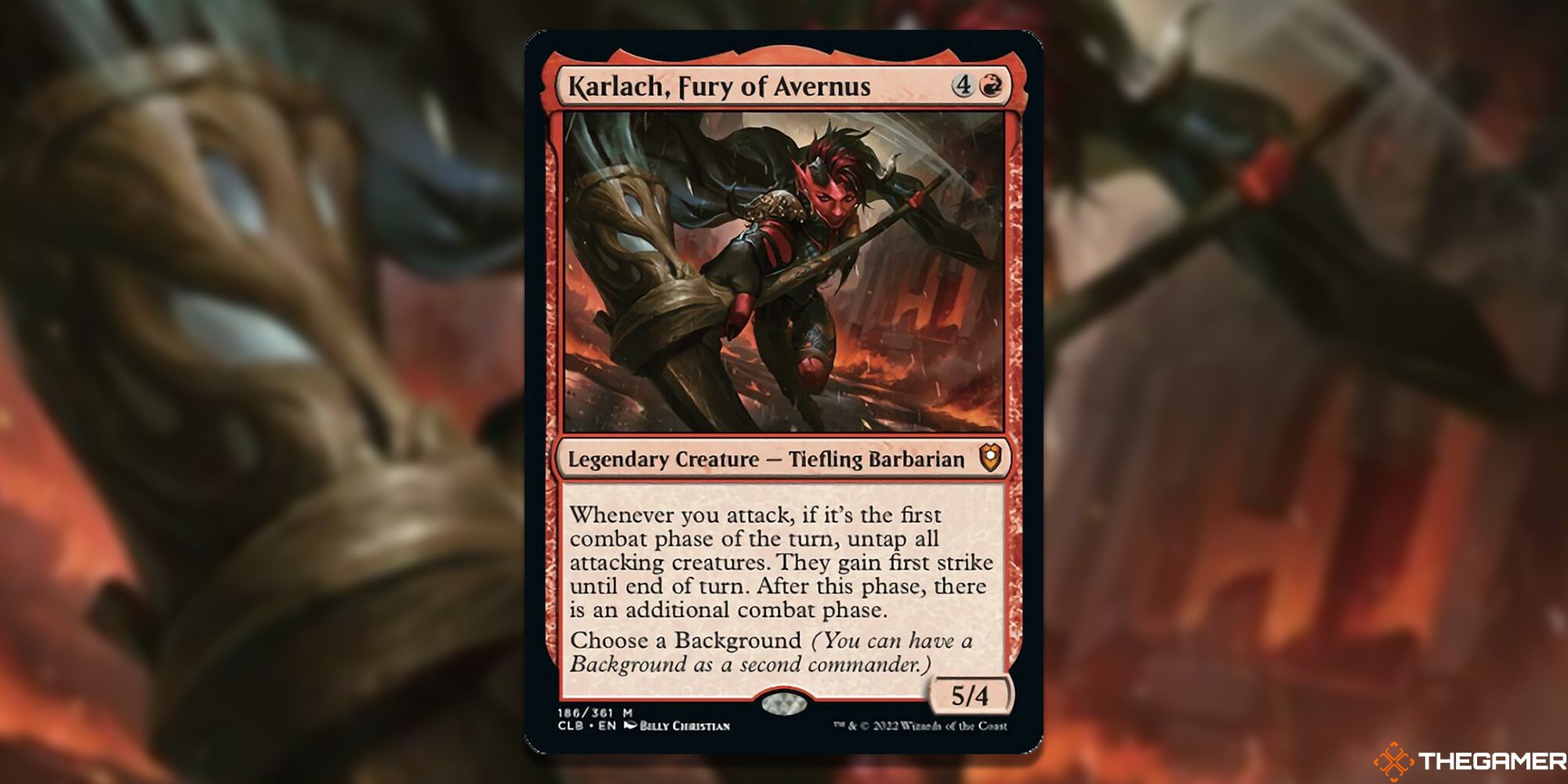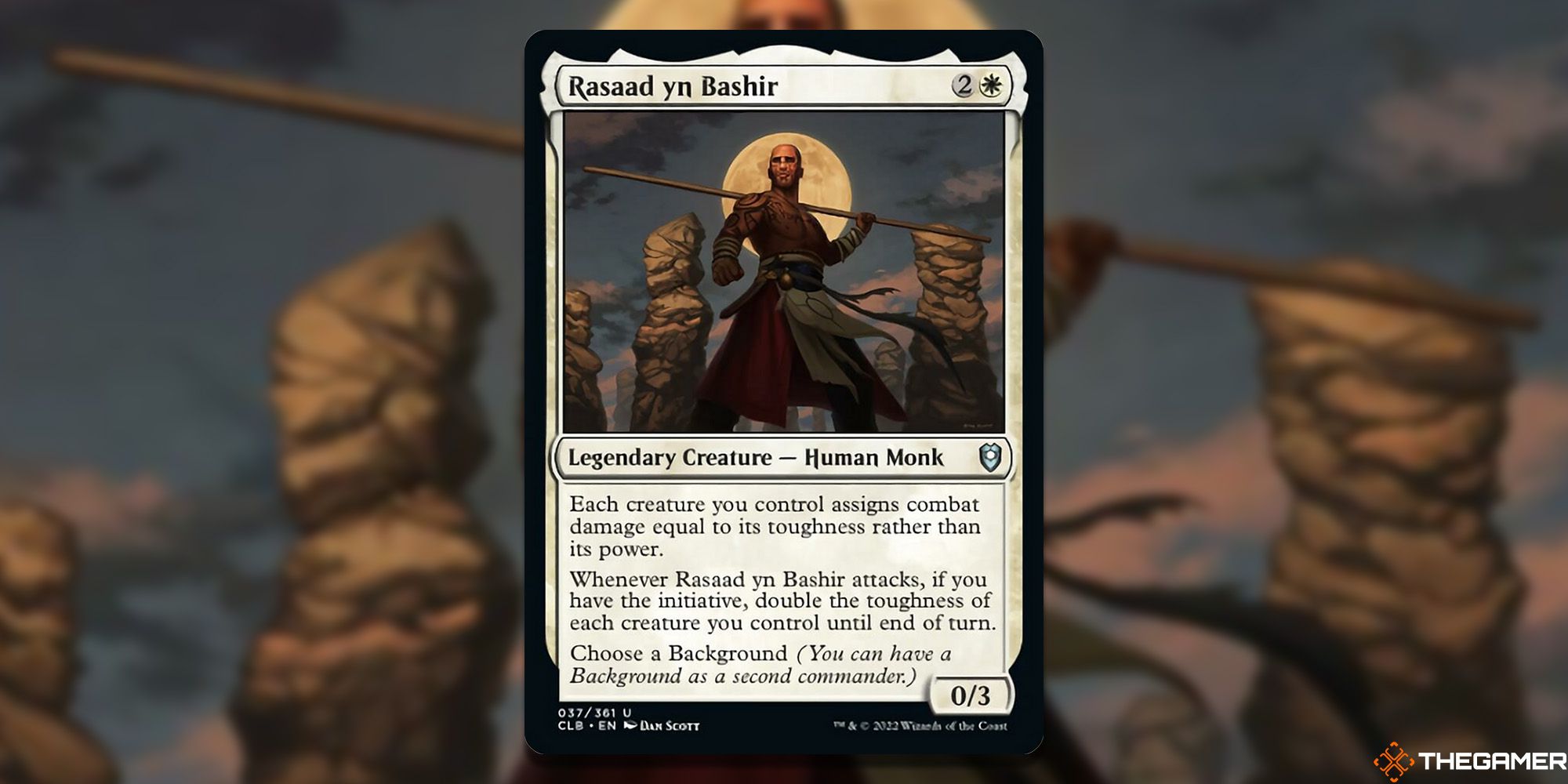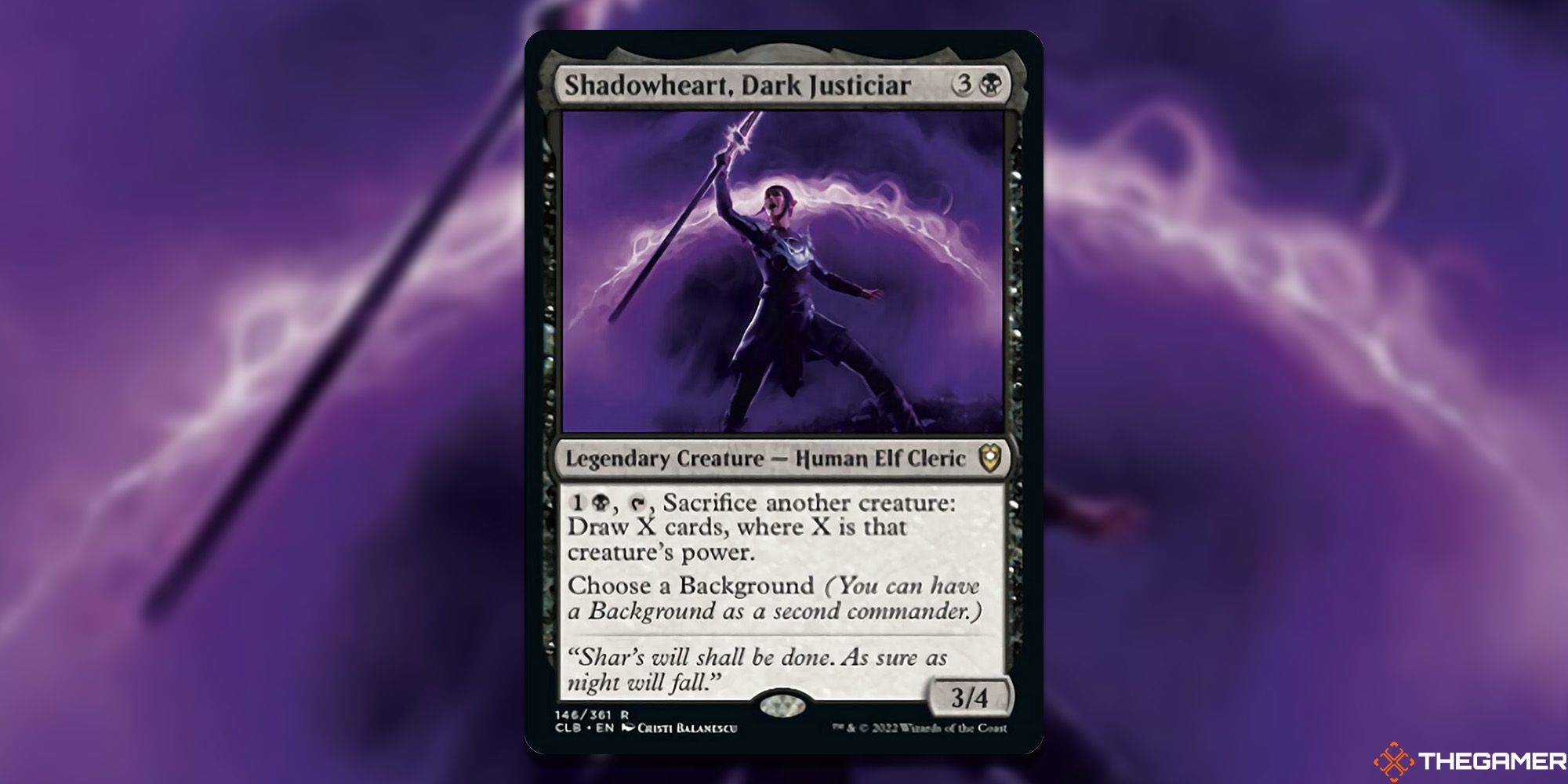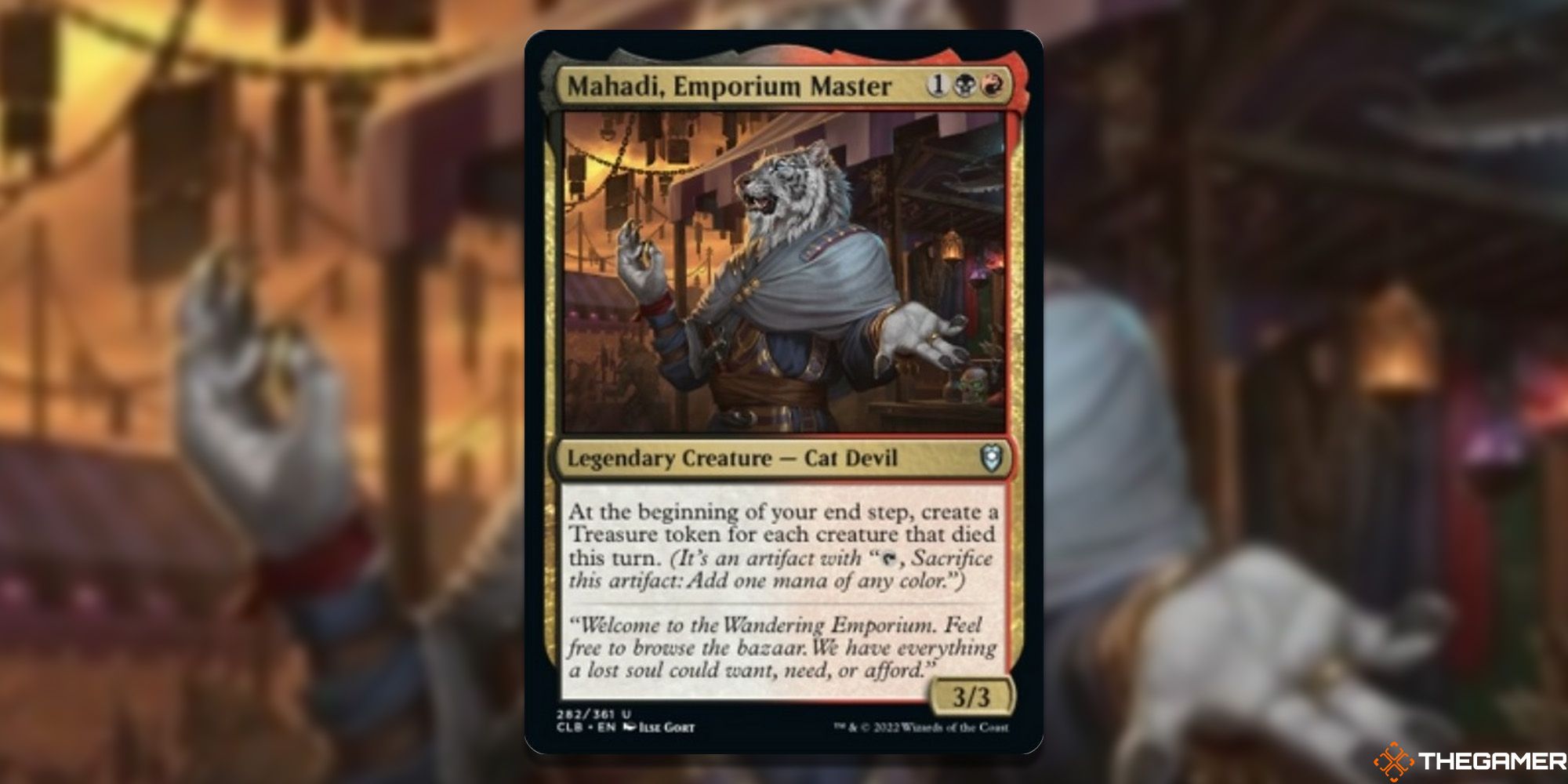Magic: The Gathering's Commander Legends: Battle for Baldur's Gate's preview season has been rather weirdly paced so far. After the bumper crop of cards we had revealed on day one, the two days that came after featured drastically fewer cards than you'd normally expect from a set preview, and without the usual daily theme that binds them all together.
Despite that, we still had a number of cool commanders revealed on day three. From the return of the Rakshasa to one of the best Mardu (black/white/red) artifact commanders we've ever seen, there was a lot to like.
Jan Jansen, Crafter of Chaos
One red, one white, one black legendary creature – Gnome Artificer – 3/3:
Haste
Tap Jan Jansen, sacrifice an artifact creature: create two Treasure tokens.
Tap Jan Jansen, sacrifice a noncreature artifact: create two 1/1 colourless Construct artifact creature tokens.
We've had a few deceptively flexible commanders in Baldur's Gate, like Myrkul and Gluntch, and Jan Jansen looks set to join that category with some incredible artifact-matters tools and an impressive colour identity.
He has lots of synergy built-in: with just one artifact to sacrifice, you can start producing Treasures, sacrifice one to produce two artifact creatures, then sacrificing one of those to produce two more Treasures for a constantly increasing number of both every turn.
More importantly, Jan Jansen goes wild with just a couple of cards that are already popular in artifact decks. First, use a card that turns Jan Jansen into an artifact, like Liquimetal Coating or Liquimetal Torque. From there, you can use Clock of Omens, which untaps a target artifact by tapping two untapped ones, to endlessly untap Jan Jensen and produce infinite Treasures and Constructs.
If you're not wanting to completely break Jan Jansen, there are other nice synergies you could use. Academy Manufactor to produce even more to sacrifice and Marionette Master, Disciple of the Vault, Reckless Fireweaver, and the new Background Agent of the Iron Throne to punish your opponents for every artifact that hits your graveyard.
Karlach, Fury of Avernus
Four generic, one red legendary creature – Tiefling Barbarian – 5/4:
Whenever you attack, if it's the first combat phase of the turn, untap all attacking creatures. They gain first strike until end of turn. After this phase, there is an additional combat phase.
Battle for Baldur's Gate has a strong combat focus, with mechanics like goad, initiative, and myriad all wanting you to swing out with your creatures. While that leaves less room for more subtle tactics, it does mean we get some great combat-oriented new commanders, like Karlach, Fury of Avernus.
Granting extra combat steps is something a few other legendries do, like Moraug, Fury of Akoum; but rarely is it this consistent as on Karlach. No landfall needed, no exerting, no limitations on which creatures untap, you just get a second combat step every time you swing out.
Plus, with the addition of choosing a Background, you can turn this mono-red commander into a multicoloured deck. Use a Noble Heritage of Flaming Fist to make Karlach a Boros (white/red) deck, or a Raised by Giants or Hardy Outlander to make it Gruul (red/green), and you open so many more combat-loving strategies.
Even in the 99, Karlach is going to be great. We've had a few combat trigger-themed commanders recently, with Wulfgar of Icewind Dale in Adventures of the Forgotten Realms and Isshin, Two Heavens as One in Kamigawa: Neon Dynasty. Either of them double Karlach's trigger to give you two more combat phases, making it a potential win condition with minimal further effort.
Rasaad yn Bashir
Two generic, one white legendary creature – Human Monk – 0/3:
Each creature you control deals damage equal to its toughness rather than its power.
Whenever Rasaad yn Bashir attacks, if you have the initiative, double the toughness of each creature you control until end of turn.
Choose a background.
Toughness-matters Commander decks are quite popular, and Rasaad yn Bashir could be a powerful new tool to include in them thanks to his ability to double your creatures' toughness for as long as you have the initiative.
The big bonus of Rasaad is his low cost, costing just three mana. With him you could get a hefty amount of damage in early in the game by using high toughness, low power, low-cost creatures like Aegis Turtle. Grizzled Leotau, Tide Drifter, and Nyx-Fleece Ram.
However, Rasaad might not be one to run as a commander, but instead one to include in the 99 for a different toughness-matters commander, like Arcades, the Strategist. Getting and keeping the initiative shouldn't be too difficult for Rasaad, especially with your wall of strong blockers, but it's an extra hoop to jump through. His biggest downside is that he doesn't allow creatures with defender to attack like Arcades, shutting you out of many of the great high-toughness creatures.
Shadowheart, Dark Justiciar
Three generic, one black legendary creature – Human Elf Cleric – 3/4:
Pay one generic and one black, tap Shadowheart, and sacrifice another creature: draw X cards, where X is that creature's power.
Choose a Background.
One of the most popular black draw cards of recent times is Village Rites, an instant that’s lets you sacrifice a creature to draw two cards. Shadowheart is effectively a Village Rites you can use every turn, with no upper limit on how many cards you can draw.
On the one hand, it's a simple card draw tool. Having an extra way to use your decayed zombies, blitzed creatures, or myriad tokens before they go away is very nice, especially for just two mana. You could also throw partner it up with a red Background enchantment and play Rakdos (red/black) sacrifice strategies, such as stealing an opponent's big creature with an Act of Treason or Besmirch before sacrificing it to Shadowheart.
More importantly, though, it's a sacrifice outlet baked into your commander, which opens it up as a potent Aristocrats commander. It's not as efficient as a Viscera Seer because it requires Shadowheart to be tapped, but having one in your command zone at all times is very handy. Use a white Background to give your deck an Orzhov (black/white) colour identity and you can use cards like Teysa Karlov or Dictate of Erebos to make it very nasty indeed.
Mahadi, Emporium Master
One generic, one black, red legendary creature – Cat Devil – 3/3:
At the beginning of your end step, create a Treasure token for each creature that died this turn.
For such a short piece of rules text, Mahadi has managed to become potentially one of the most powerful Treasure producers since Dockside Extortionist. Whether that's a good thing or not is up for debate, but the fact that this is an uncommon commander is absolutely wild.
There are lots of ways you could play Mahadi, especially in the Rakdos (black/red) colour identity. Ranging from a basic burn/control build to destroy your opponent's creatures to a full board wipe-centric suite full of cards like Orcus and the Meathook Massacre, Mahadi's brevity only encourages more open-ended deck building.
The strongest strategy for Mahadi seems to be a more traditional Rakdos sacrifice setup, with cards like Juri, Master of the Revue; Body Dropper, and Havoc Jester to not only work with all the creatures you sacrifice to make the Treasures, but also play off of when you use those Treasures to cast your spells.
From a lore perspective, while Magic has Rakshasa of its own, it's cool to see a classic Dungeons & Dragons version, complete with the creepy backwards hands they're famous for.

